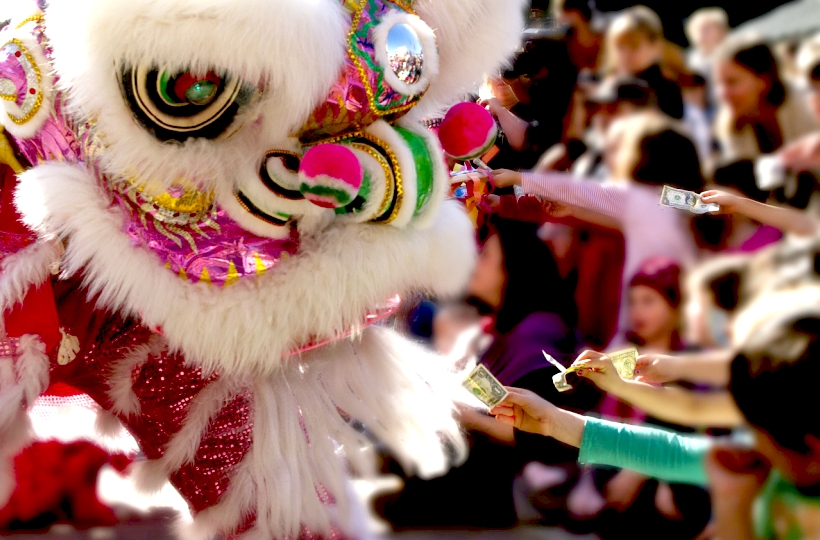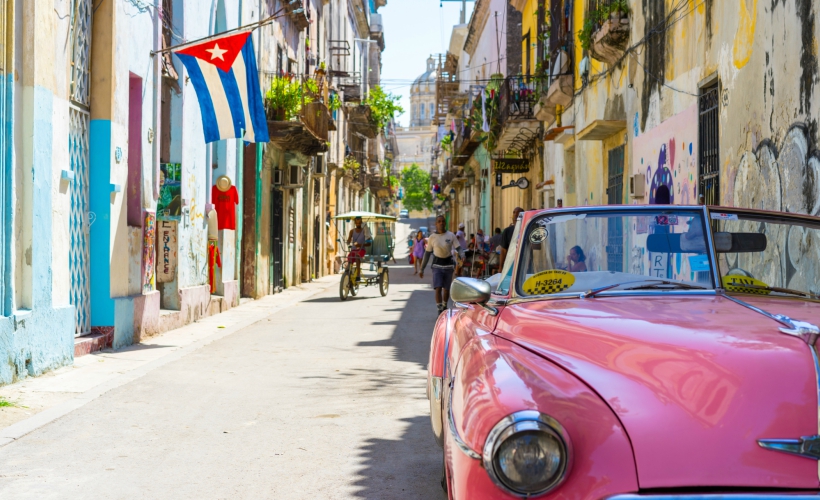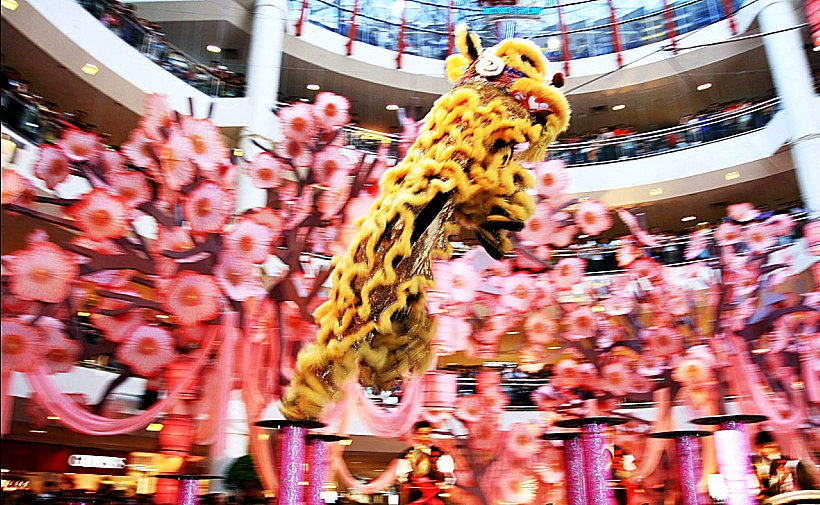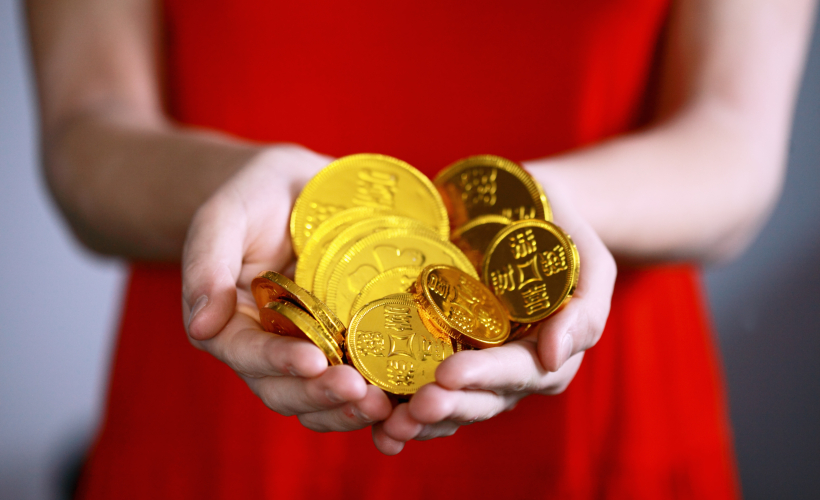
This year’s Lunar New Year dawns upon us early, and as its start date draws earlier and earlier every year. It seems to blend into the December and New Year festivities to become a haze of excitement and cheer.
Other than the slight loss of productivity, one can’t be mad! Especially when there are a million and one delicious treats to savour, many only available during this time of year.
From the assortment of mouthwatering biscuits your aunt makes and sells every year, to the boxes upon boxes of mandarin oranges you can’t help but snack on, have you ever taken a second to ponder about the origins of these yummy seasonal treats?
Barbecued Pork Jerky (Bak Kwa)
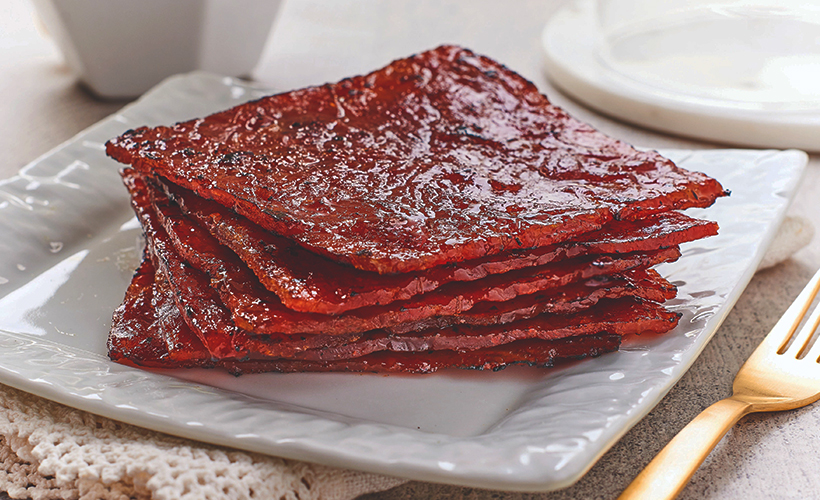
The origins of bak kwa in Malaysia and Singapore lead back to ancient China, specifically the Fujian province when pork (or meat, in general) was considered a luxury not everyone could afford.
Pork was sliced into thin strips and marinated with sugar and spices before being air-dried as a means of preservation. The slices would then be cooked over a hot plate before consumption.
During the early 19th century, when thousands of people from Fujian came to Malaysia (then British-ruled Malaya) looking to escape from a life of poverty in China, this delicacy was supposedly brought along with them, and has then been adapted to suit the tastes of the locals here.
So the next time you wait in line to buy this luxurious product to gift your in-laws, remember the story behind it. Perhaps then you’ll feel more at ease about its cost!
Pineapple Tarts
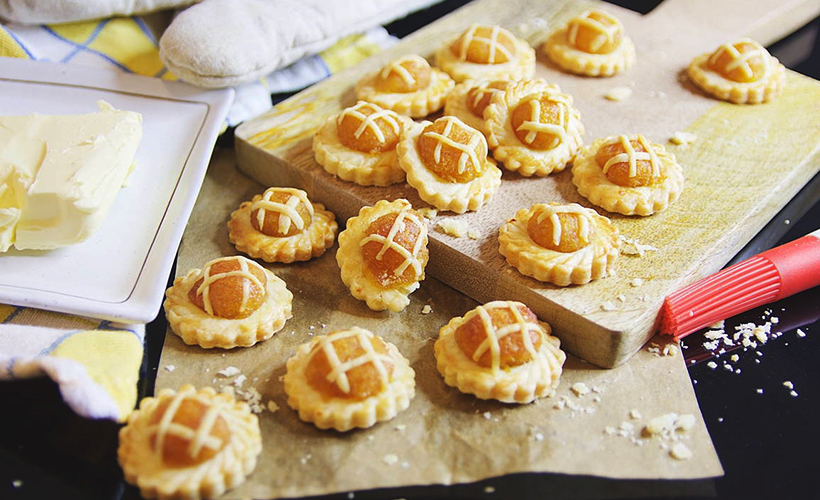
Every child’s favourite and every adult’s guilty pleasure, it’s not hard to see why this bite-sized pastry is so popular during the Lunar New Year. Sweet-yet-tart pineapple jam encased in a pastry so buttery and crumbly it can hardly hold itself together. Yum!
But come to think of it, since when does such copious amounts of butter ever feature itself in local Southeast Asian pastry recipes? Especially one so distinctly Southeast Asian as the pineapple tart?
To start off, let’s go back to the 15th century, when Malaya was still a Portuguese settlement. During this time, the Portuguese introduced pineapples and also brought over their baking techniques. Around this time was also when the Peranakan culture came to be, and this influenced the addition of Malay spices in the pineapple jam such as cinnamon and star anise. The tart base, on the other hand, can be attributed to the Portuguese due to its then uncommon ingredients and techniques not often found in traditional Malaysian cuisine.
Now, pineapple tarts and pineapples are seen as a must-have during the festive period, partly due to its auspicious connotations. Pineapple in Hokkien is ‘ong lai’, which translates to ‘fortune come’.
Sticky Rice Cake (Nian Gao)
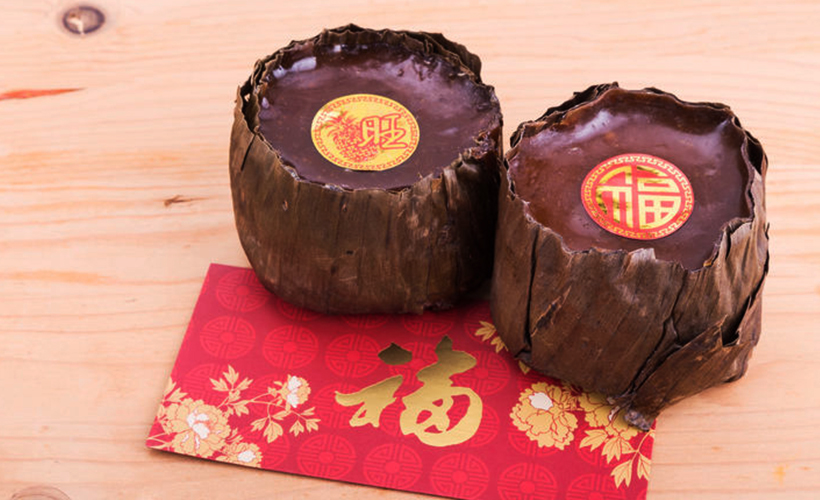
This popular, amber-hued cake is a homonym for ‘higher year’, which could imply more successes in the year to come, thus making it a fan favourite in the Lunar New Year gift culture.
The origin of nian gao is a unique one. In ancient China around 722-481 BC, strong walls were built to protect the Wu Kingdom. Banquets were held, and many celebrated as they thought that the wall would protect them. That is, all except Minister Wu Zi Xu, who advised the soldiers to build a hole underneath the wall in the event of a siege.
When Wu Zi Xu’s words came true many years after his passing, soldiers found that the bricks of the wall below the earth were made from an early version of nian gao, and it was this discovery that saved many from starvation.
Plan your foodie adventure with these cities:
10 Cities With The World’s Best Street Food
Prosperity Toss Fish Salad (Yee Sang)
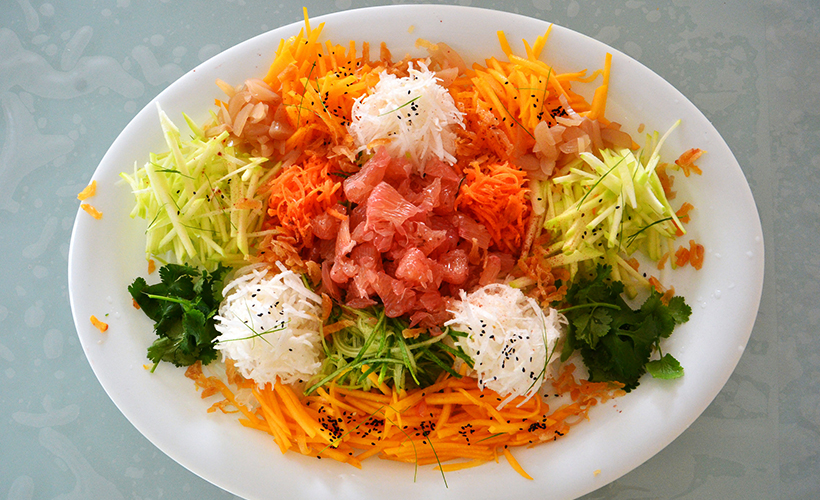
The infamously messy dish, with every single ingredient and action holding an auspicious purpose is a glorious sight to see or participate in during the Lunar New Year period. But did you know this festive dish didn’t come from China?
It’s true origins are debatable, with some Singaporeans claiming its invention to the “4 Heavenly Kings,” while Malaysia had sources of its creation which led to a humble man from the small town of Seremban. This led to a dispute in 2012 which gained international recognition!
The Malaysian origin speaks of a Seremban man named Loke Ching Fatt who opened a banquet catering business named Loke Ching Kee.
After the horrible Japanese occupation, Loke thought of trying to boom business during the Chinese New Year by recreating his version of a similar lesser-known Cantonese dish which was typically eaten on the seventh day of the Chinese New Year. From there on, well, you know how the story goes.
Melt-in-the-mouth Tapioca Biscuits (Kuih Bangkit)
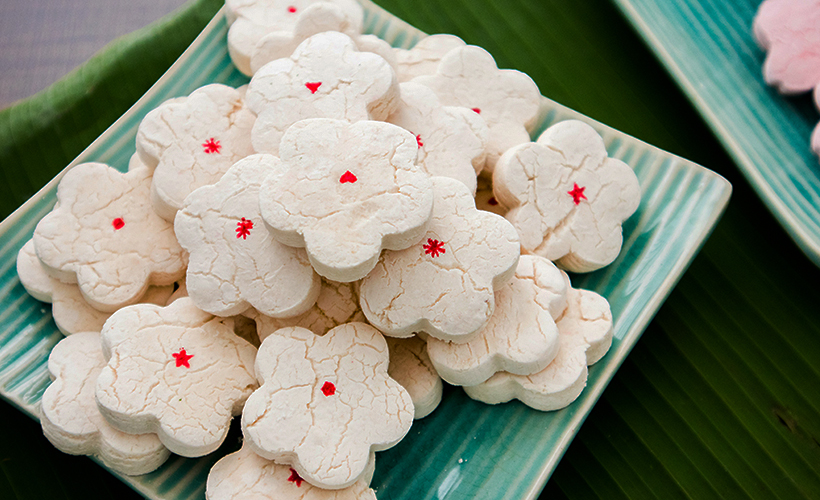
White and red – colours so often seen in Chinese culture. But hold on… white isn’t a very auspicious color at all. In fact, it’s the exact opposite! Isn’t it typically associated with prayers and worn during funeral ceremonies? Well, there’s a reason behind this.
Kuih bangkit originated from Peranakan cuisine, as you might be able to tell from the use of coconut milk in its recipe. In fact, kuih bangkit was originally made as altar offerings! They were baked in myriad shapes such as koi fish and various flowers which hold their own auspicious meanings.
A great example would be Chrysanthemum flowers, which symbolises longevity, and are common as offerings for the deceased.
Sink your teeth into Japan’s best:
Beyond Sushi And Ramen: Lesser-known Must Eats In Japan
Love Letters (Kuih Kapit)
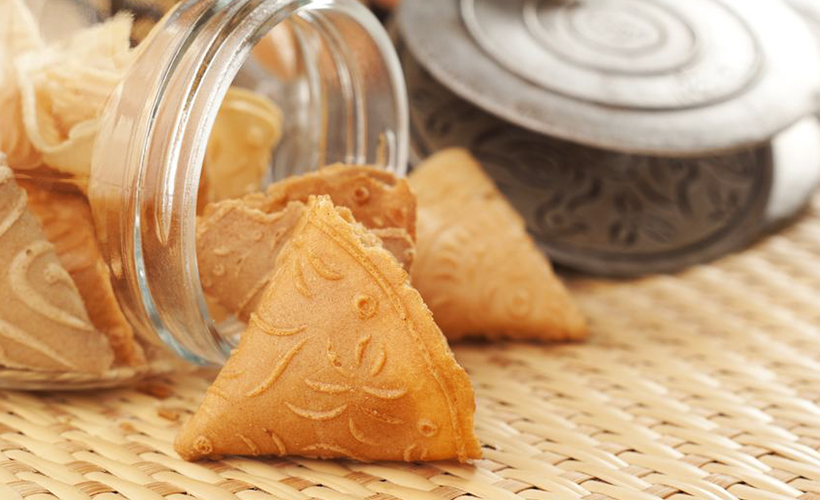
Fragrant and crispy, love letters have a unique, delicate method of baking which requires not only specialised equipment but a good sense of timing as well.
The rich, eggy batter is spread thinly over a metal mould with intricate detailing, then clasped together to form a thin wafer which is then folded into thirds or rolled up to form an egg roll of sorts.
One look at these love letters and another scrumptious baked good might come to mind – waffles. Back when the Dutch colonised Malaya in the 16th century, they brought their baked goods over with them. Among them was the waffle!
But due to the lack of butter in Malaya then, it was replaced with coconut milk instead, which resulted in the signature coconutty taste we associate with love letters today. This explains why this kuih is sometimes called kuih Belanda (Belanda being the Malay name for The Netherlands).
Peanut Biscuits
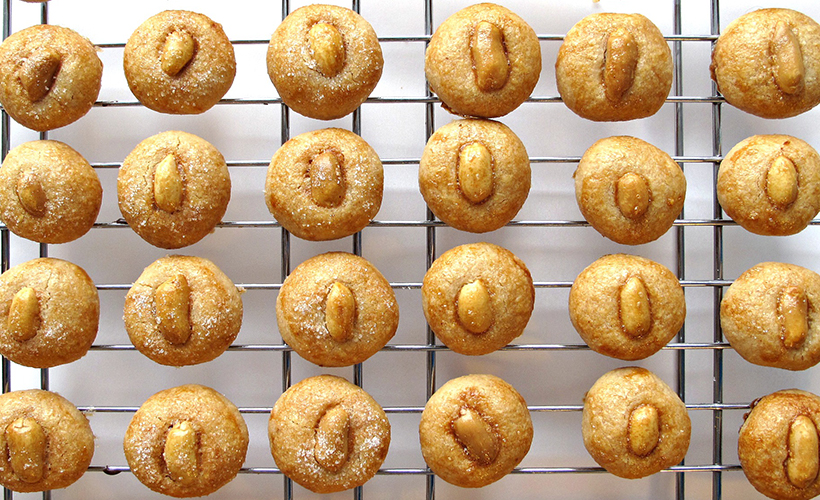
Peanut biscuits are typically among the first of the multiple jars of biscuits to grace the homes of Malaysians or Singaporeans during the Lunar New Year. It’s sweet but balanced out with the perfect amount of saltiness. It melts in your mouth, and sticks to the roof of your mouth at the same time when you eat it.
The Chinese are huge fans of playing with words. Homonyms and onomatopoeias are commonplace in the everyday conversation and can be centerstage for great humour, and even fun marketing tactics!
So considering that peanuts in Mandarin is “hua sheng”, with “sheng” meaning birth, peanut biscuits symbolise the birth of prosperity and wealth! It’s the perfect treat to bid welcome to the Lunar New Year.
Basin Dish (Poon Choi)
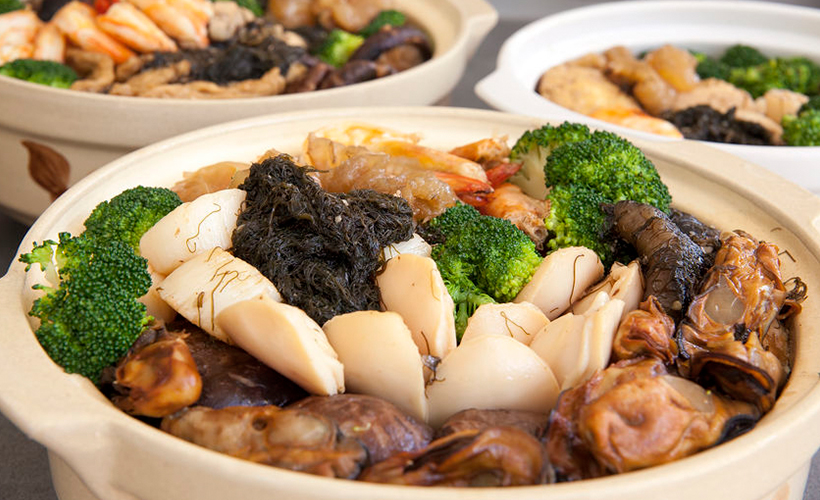
This extravagant, luxurious dish is popular in certain parts of China, but mainly in Hong Kong. From there, the dish spread in popularity to Malaysia due to the large Cantonese population here.
When Mongol troops invaded China during the Song dynasty, the young Emperor fled to the area around Guangdong Province and Hong Kong. In the presence of the Emperor, the locals strived to serve him the best they could by collecting their best ingredients and cooking them together in an effort to produce a meal fit for a king.
Come serving time, there simply weren’t enough containers and thus, the poon choi was served in large washbasins.
Generally, poon choi contains a huge assortment of various foods like roast pork, duck, abalone, prawns, fish maw, mushrooms, white radish and Chinese cabbage. Braised together, an incredibly savory stew is formed, with each ingredient complementing the next.
